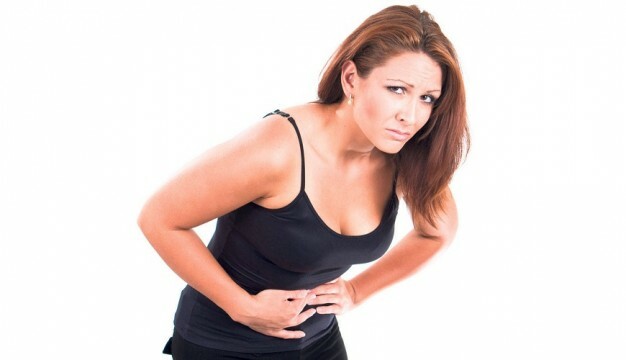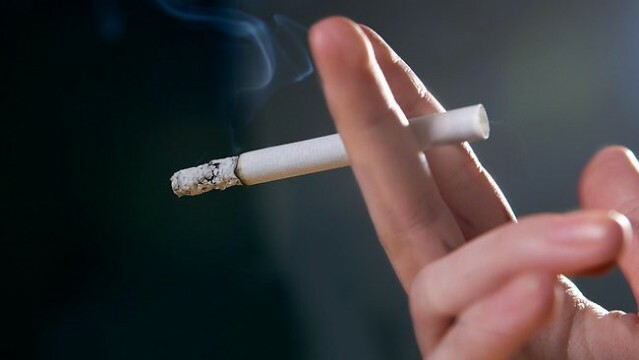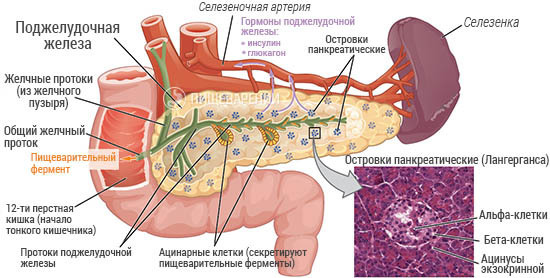Pancreatitis brings a lot of discomfort to the patient and significantly reduces the quality of his life. Achieve a normal lifestyle is possible only with the correct scheme and tactics of treatment, as well as a selected and adjusted diet. It is important for the patient and his family to know how to relieve a pancreatitis attack at home.
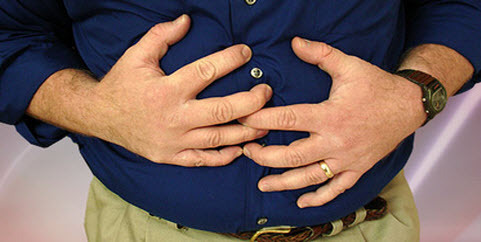
Causes of the disease
Pancreatitis is the inflammatory process in the tissues and cells of the pancreas. Since iron is an integral part of the gastrointestinal tract and the endocrine system, the causes can hide in these body systems:
- Improper nutrition;
- Abuse of fatty, sweet food;
- Alcohol abuse;
- Heavy smoking;
- Diseases of the gallbladder;
- Pathologies of the gastrointestinal tract;
- Hormonal disorders.
The disease can occur in the chronic and acute phase. Usually a person does not suspect the presence of pancreatitis until it is disturbed by pain, and the longer it lasts, the more pain is expressed.
Symptoms of an attack
Chronic pancreatitis can pass into the acute phase quite sharply, paroxysmally. Symptoms and the first treatment of an attack of pancreatitis can be recognized and treated at home:
- A sharp increase in temperature above 37 ° C;
- Nausea and uncontrolled vomiting;
- Trembling, fever;
- Aversion from food and drink, even from clean water;
- Acute pain syndrome in the peritoneum, which feels like it feels;
- Pain can be given to the chest, back, waist, sides, hands;
- Frequent palpitation, while lowering blood pressure;
- Typically, pain reduction in the sitting and lying position, bending the knees;
- Paleness, icterus of skin;
- Sticky, cold sweat on the skin.
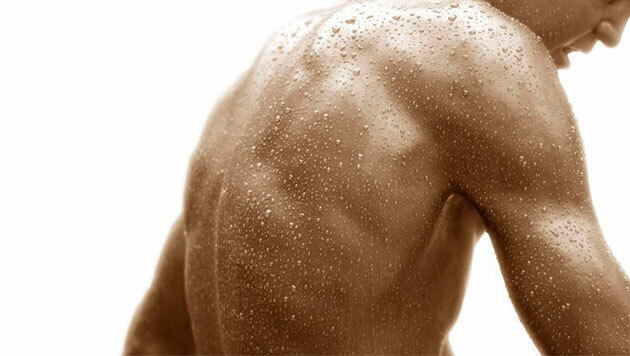
What to do if you have a pancreatitis attack? Usually, individual recommendations are given by the gastroenterologist at the first treatment. If the attack occurred for the first time, follow the following rules.
First Aid to the patient
An attack of pancreatitis with vivid symptoms does not heal at home - it requires immediate medical attention. Before the ambulance arrives, it is necessary:
- Provide the patient with a recumbent position in a comfortable posture that would reduce pain;
- Do not give food and drink except clean water without gas and dyes, since vomiting removes a lot of water from the body and dehydration develops;
- To the pancreas area, ice can be applied to reduce the pain syndrome, but no more than for five minutes. Use a hot-water bottle with cold water or an ice bag;
- Do not interfere with the urge to vomit. On the contrary, this process helps to ease the condition for a short time.
Analgesics
Usually, doctors say that it is not possible to do painkillers for injecting or giving pills in case of an attack of pancreatitis, as this will prevent correct diagnosis and first aid. But the pain during an attack can bring the patient to a painful shock, therefore only drugs from the group of antispasmodics and analgesics are allowed to be taken.

Spasmolytics expand the gland ducts. If pancreatitis develops against the background of cholelithiasis, then the attack can be triggered by a bad outflow of bile, then a combination of the choleretic preparation with an antispasmodic is allowed.
Calming a light attack
Preparations for a mild attack:
- No-spawn or drotaverin, buscopan, papaverine, mebeverin, meteoplasmol - antispasmodics;
- Baralgin, pentalgin, acetamiphen - analgesics;
- Voltaren, paracetamol, relafen, indomethacin, aspirin - anti-inflammatory.
Only one drug should be selected from each group. To give no more than two tablets, the next reception is possible only after two or three hours, if during this time the ambulance did not arrive.
Do not inject and drip with these drugs at home. Such procedures will be performed in a hospital with strictly calculated dosages depending on the intensity of the attack. Since you can remove the pain before the arrival of an ambulance, be sure to indicate the brigade arrived, what preparations, when and in how many were taken.
Attacks of moderate severity
First aid in such an attack can be provided only by an ambulance crew. If there are recommendations from the gastroenterologist, or preparations to stop a light attack did not help, anesthetize can be as follows:
- The introduction of novocaine;
- Administration of pifolen, dimedrol, suprastin, peritol;
- The administration of furasemide for the removal of edema of the body;
- Anesthetic Eufillin will relieve spasms.
The rest of the therapy is prescribed only by the attending physician. In severe attacks, first aid may even be dangerous, therefore it is not recommended to go beyond the drugs presented above.
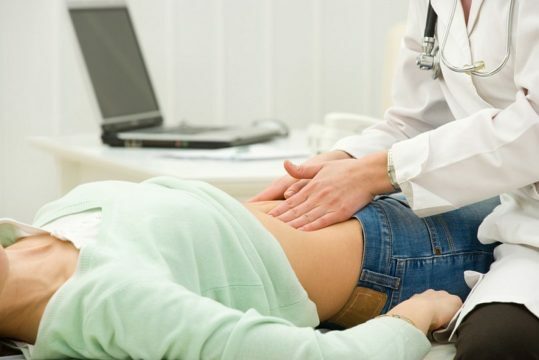
In hospital, severe seizures with ineffectiveness of previous drugs are treated:
- Buprenorphine;
- Pentazocine;
- Tramadol;
- Promedom.
These drugs are narcotic and are only available on prescription. Their independent use at home can be regarded not only as intentional harm to the patient, but also as a criminal offense.
Severe seizures require urgent hospitalization, as they can lead to pain and loss of consciousness of the patient. Since it is almost impossible to treat an attack in this state, it is advisable to seek help as quickly as possible.
The main treatment for
In the first days after an acute attack, you should strictly follow the doctor's recommendations. Relieve the pain yourself after this can only be those drugs that will be prescribed by the gastroenterologist.
In the first hours, when you need to quickly help, you should not forget about the drinking regime. The liquid helps to reduce the secretion of pancreatic juice, thereby reducing the pain syndrome, in addition, replenishes fluid loss in the body, as the attack is accompanied by vomiting and diarrhea.
Further treatment is conducted according to the principles:
- Special diet - medical tables for Pevzner;
- Spasmolytic, anti-inflammatory and analgesic therapy;
- Full rest and bed rest.
The correct diet of
The diet is developed by a nutritionist at the institution, which the patient entered with a sharp attack. Often, the treatment table is used as a basis for pancreatitis according to Pevsner's scheme.
- For the first 48 hours, the patient is not allowed to eat any food. It is allowed to drink broth of dogrose and pure mineral water. From the third day low-calorie products without fat, salt, carbohydrates are allowed.
- In the future, food should be only boiled or steamed. Serve hot and cold dishes can not be - the temperature should not be above 65 degrees.
- Food should be easily assimilated, the advantage is given to fast carbohydrates - fruits, vegetables, fiber, cereals. Vegetarian soups are highly recommended. Broths for the first dishes are made secondary.
- Fish, cottage cheese, sugar, honey, juices, jam, puddings are also allowed. Fatty foods cooked with fries are prohibited. This also applies to barbecue dishes.
What is the benefit of the
diet? In the next year after the last attack of pancreatitis, the patient's health will directly depend on the correctness of the diet. It is the wrong food and a deviation from dietary recommendations in almost a hundred percent of cases provokes a repeated relapse of the disease.
Food allows you not to strain the walls of the stomach and intestines, at a minimum, activating the pancreas. A vitamin composition and fiber contribute to better absorption and normalization of the intestine and stomach.


